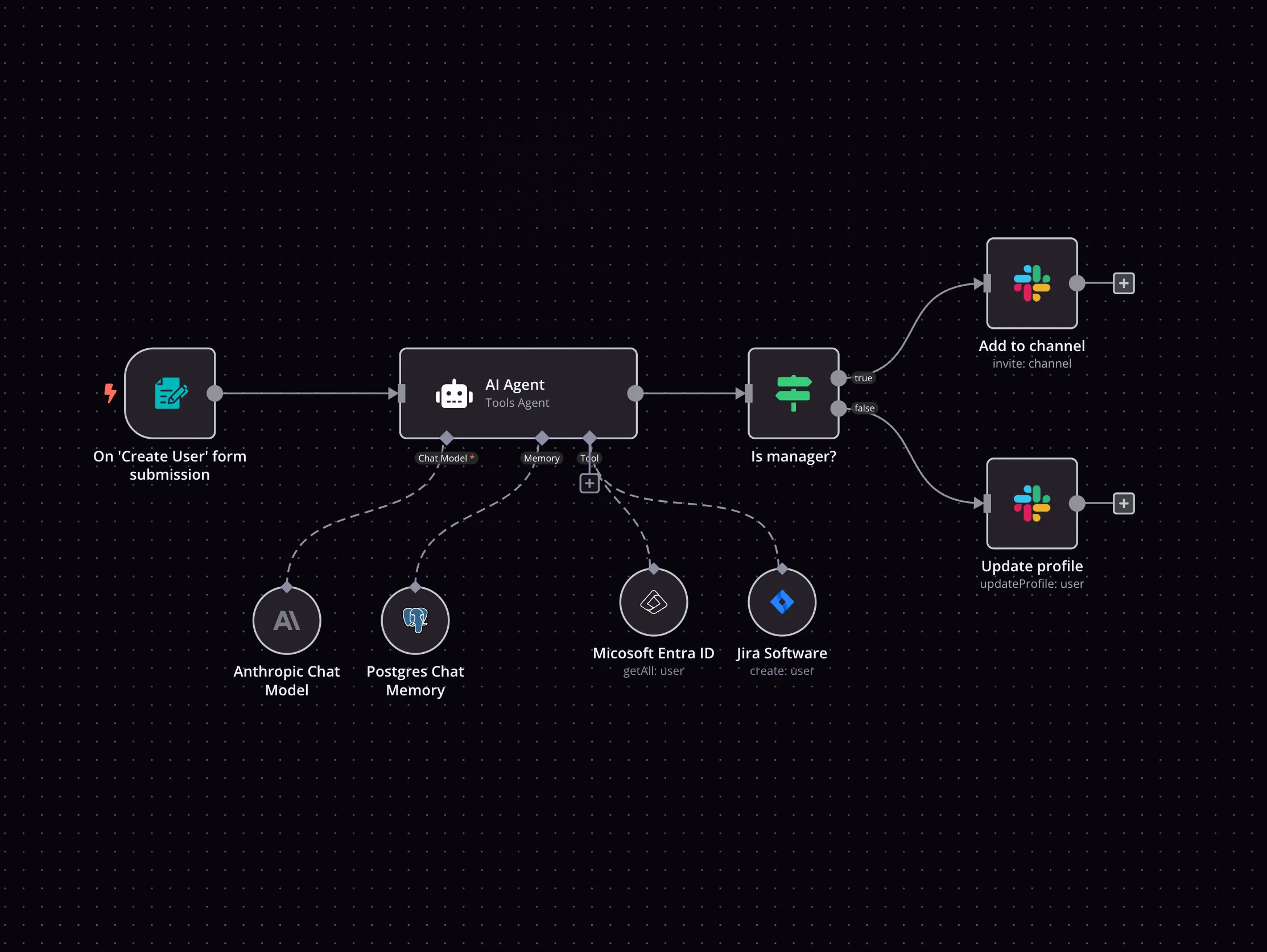Apify and Papyrs integration
Save yourself the work of writing custom integrations for Apify and Papyrs and use n8n instead. Build adaptable and scalable workflows that work with your technology stack. All within a building experience you will love.

How to connect Apify and Papyrs
Create a new workflow and add the first step
In n8n, click the "Add workflow" button in the Workflows tab to create a new workflow. Add the starting point – a trigger on when your workflow should run: an app event, a schedule, a webhook call, another workflow, an AI chat, or a manual trigger. Sometimes, the HTTP Request node might already serve as your starting point.
Build your own Apify and Papyrs integration
Create custom Apify and Papyrs workflows by choosing triggers and actions. Nodes come with global operations and settings, as well as app-specific parameters that can be configured. You can also use the HTTP Request node to query data from any app or service with a REST API.
What can you do with Apify?
Run an Actor
Runs an Actor. You can override the Actor’s input configuration by providing a custom body, which will override the prefilled input values.
Run an Actor and Get Dataset
Runs an Actor, waits for it to finish, and finally returns the dataset items
Scrape Single URL
Scrape a single URL using the Apify Website Content Crawler Actor and get its content as text, markdown, and HTML
Get Last Run
Retrieves the most recent run of an Actor. This endpoint is useful for quickly accessing the latest run details, including its status and storages, without needing to specify a run ID.
Run Task
Runs an Actor Task and return all associated details. You can optionally override the Actor’s input configuration by providing a custom body.
Run Task and Get Dataset
Runs an Actor task, waits for it to finish, and finally returns the dataset items. You can optionally override the Actor’s input configuration by providing a custom body.
Get User Runs List
Gets a list of Actor runs for the user. This endpoint is useful for retrieving a history of runs, their statuses, and other data.
Get run
Gets the details of a specific Actor run by its ID. This endpoint is useful for retrieving information about a run, such as its status, storages, and other metadata.
Get runs
Gets a list of Actor runs. This endpoint is useful for retrieving a history of runs, their statuses, and other data.
Get Items
Retrieves items from a dataset
Get Key-Value Store Record
Gets a value stored in the key-value store under a specific key
Supported API Endpoints for Papyrs
List pages
Retrieve all pages for a user.
Get page
Returns a dictionary with page information.
Get all pages
Get a list of all pages visible to the user making the request.
Delete page
Deletes a page based on the provided page ID.
Create page
Creates a new page with the provided content and settings.
Create paragraph
Create a new paragraph in the specified page.
Post feed
Submit a new post to the feed.
Post to the Activity Stream
Post a comment to the Activity Stream.
Post to discussion stream
Post a comment to a discussion stream on a specific page.
List records
Returns a list of all form records submitted on the specified page.
Get widget
Retrieves details of a specific widget by its ID on the specified page.
Get widget
Retrieves details of a specific heading widget by its ID on the specified page.
Get widget
Retrieves details of a specific attachment widget by its ID on the specified page.
Create paragraph widget
Creates a new text box widget on the specified page.
Create heading widget
Creates a new heading widget on the specified page.
Update paragraph widget
Updates an existing text box widget on the specified page.
Update heading widget
Updates an existing heading widget on the specified page.
Create attachment widget
Creates a new attachment widget on the specified page.
Create attachment
Create a new attachment widget on a page.
Update attachment
Update an existing attachment widget on a page.
Delete attachment
Delete an attachment widget from a page.
Delete paragraph
Delete a paragraph widget from a page.
Delete heading
Delete a heading widget from a page.
Search
Get a list of search results based on a query.
Get all people
Get a list of all people in your account.
Delete user
Permanently delete a user from your account.
To set up Papyrs integration, add the HTTP Request node to your workflow canvas and authenticate it using a generic authentication method. The HTTP Request node makes custom API calls to Papyrs to query the data you need using the API endpoint URLs you provide.
See the example hereThese API endpoints were generated using n8n
n8n AI workflow transforms web scraping into an intelligent, AI-powered knowledge extraction system that uses vector embeddings to semantically analyze, chunk, store, and retrieve the most relevant API documentation from web pages. Remember to check the Papyrs official documentation to get a full list of all API endpoints and verify the scraped ones!
Apify and Papyrs integration details
FAQ
Can Apify connect with Papyrs?
Can I use Apify’s API with n8n?
Can I use Papyrs’s API with n8n?
Is n8n secure for integrating Apify and Papyrs?
How to get started with Apify and Papyrs integration in n8n.io?
Looking to integrate Apify and Papyrs in your company?
The world's most popular workflow automation platform for technical teams including
Why use n8n to integrate Apify with Papyrs
Build complex workflows, really fast


